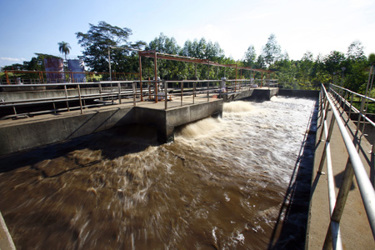Math Solutions Explained: Biochemical Oxygen Demand (BOD) mg/L

By Daniel Theobald, "Wastewater Dan"

Water Online’s “Math Solutions Explained” series, presented by wastewater consultant and trainer Dan Theobald (“Wastewater Dan”), educates operators by explaining BOD mg/L calculations.
The solution of the BOD concentration units in a flowing waste stream is calculated as a measurement of a specific amount of BOD having an exact number of pounds of BOD in a precise volume of flowing wastewater. The concentration can be expressed in different units; however, this presentation will focus on calculating and expressing BOD units in milligrams per liter (mg/L) related to the wastewater discharge permit.
Before focusing on the details of the calculation, recognizing the advantages of knowing and understanding the calculated BOD mg/L result is explained here.
To a wastewater operator, the BOD is often permissible on the discharge permit up to a limited value, such as 250 mg/L.
Managing BOD mg/L treatment/removal can be paramount for a successful permit-compliant BOD mg/L discharge value. One technique to help manage BOD mg/L discharge is to monitor the value throughout each wastewater process unit.
A practical approach for monitoring BOD treatment/removal is to monitor the concentration such as mg/L. Over time, monitoring these amounts will likely reveal valuable treatment/removal data, including standard operating guidelines, treatment/removal percentages, and much more.
Also, it is helpful for the wastewater operator to understand the relationship of established standard operating guidelines to actual operating results to achieve BOD mg/L discharge permit compliance.
If the BOD mg/L concentration of wastewater entering the initial or an individual process unit increases, the amount of time to treat wastewater decreases; and if the volume of wastewater decreases, the amount of time to treat wastewater increases.
If so, consider adjustments to control settings, flow rates, chemical feed rates, or other appropriate operational settings to maintain and achieve BOD mg/L discharge permit compliance.
Ultimately, advance knowledge of the BOD mg/L of wastewater entering the wastewater treatment plant could be very helpful to the operator, which is where calculating BOD mg/L is beneficial. Understanding BOD mg/L as influent enters process units — e.g., the equalization tank and other wastewater treatment process units — along with the operational control settings per process unit – allows for maximum BOD mg/L treatment/removal.
To calculate BOD mg/L, use a modification of the basic formula to calculate the pounds in waste streamflow. For the BOD mg/L calculation, modify the mathematics formula to solve for the concentration (mg/L).
The other unique application of calculating BOD mg/L is recognizing the careful modification of the essential pounds in a waste stream formula. Typically, the basic math formula is set up to solve for pounds, and the formula needs to be modified to solve for the concentration (mg/L). So, it is vital to alter the formula accordingly before solving the concentration (mg/L).
To become more proficient in calculating BOD mg/L, it is helpful to understand basic wastewater mathematics solution components, such as:
- how to read a math word problem to identify the explicit question;
- learning to select the appropriate formula to solve the exact math problem;
- proficiency in setting up the equation;
- selecting the “known” information and determining what is “unknown” from the word problem
- using units of expression properly while solving the problem
Familiarity with wastewater mathematics can be beneficial in advancing a wastewater operator's career.
Therefore, I have created a BOD mg/L learning exercise.
I have also created a series of wastewater math learning exercises that will continue to expand with more options.
If you have specific wastewater math queries, please submit areas of interest or a question.
Known in the industry as “Wastewater Dan,” Daniel L. Theobald, proprietor of Environmental Services (www.esdlt.com), is a professional wastewater and safety consultant/trainer. He has more than 33 years of hands-on industry experience since 1987, operating many variants of wastewater treatment processing units, and is eager to share his knowledge about wastewater with others.
Theobald serves as an active consultant for industries looking to achieve, maintain, and improve discharge-permit-compliant wastewater treatment at reduced overall cost. He is a Lifetime Member of the Who’s Who Registry of Professionals and holds numerous certifications from wastewater management regulatory boards and professional organizations. Theobald contributed one chapter to the Water Environment Federation’s (www.wef.org) Manual of Practice # 37 (MOP-37), a technical manual resource guide for biological nutrient removal, published in 2013.
